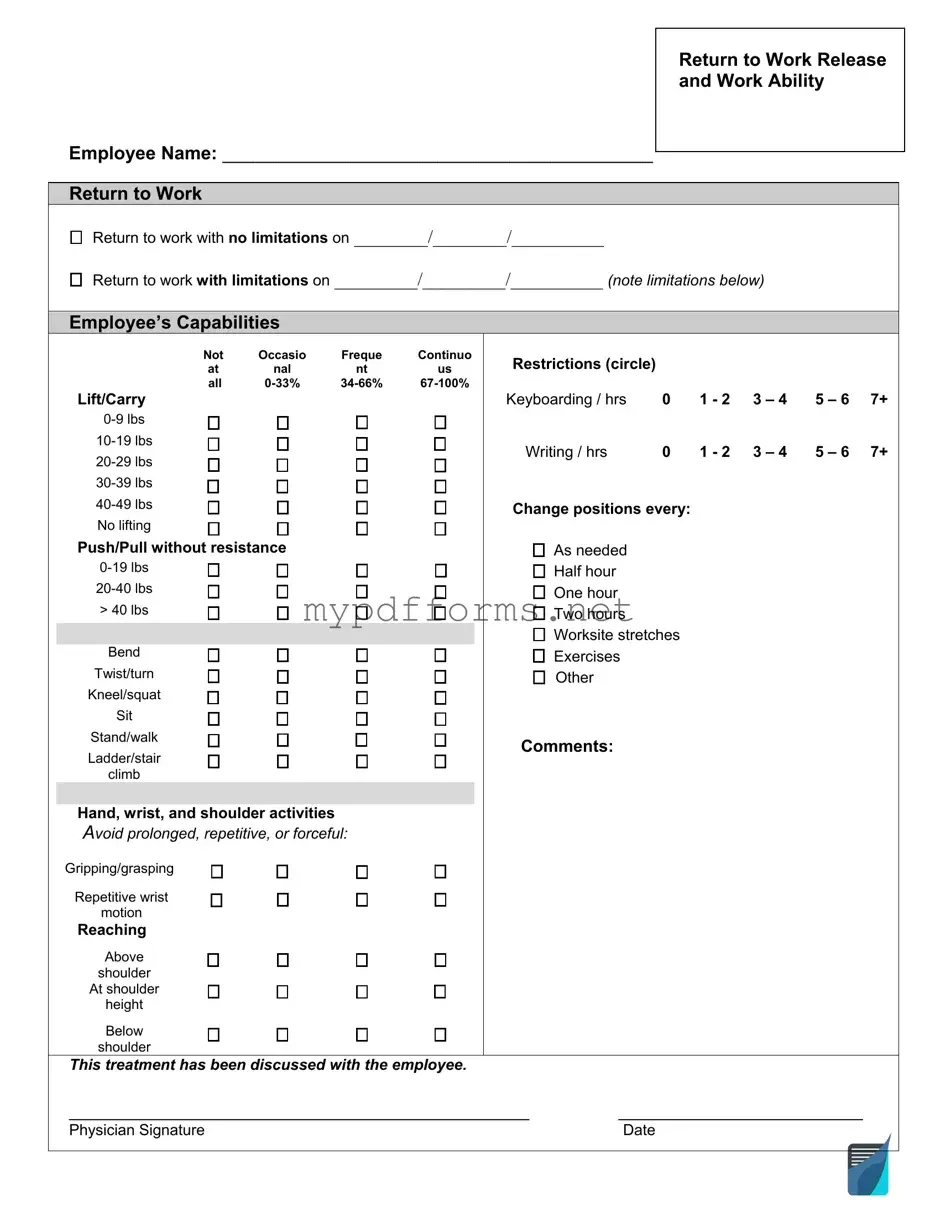The Employment Verification form serves a similar purpose to the Work Release form by confirming an individual's employment status. This document typically includes details such as the employee's job title, length of employment, and salary information. It is often required by financial institutions or other entities to verify income for loan applications or other financial transactions. Both forms aim to provide essential information regarding an individual's employment, but the Employment Verification form focuses more on income confirmation rather than permission for work outside a correctional facility.
The Leave of Absence form is another document that shares similarities with the Work Release form. This form is used by employees to formally request time away from work for various reasons, such as medical needs or personal matters. Like the Work Release form, it requires approval from a supervisor or HR department. Both documents emphasize the need for proper authorization and outline the conditions under which the individual may be absent from their primary work environment.
The Release of Liability form is also comparable to the Work Release form in that it involves the acknowledgment of risks associated with a specific activity. While the Work Release form grants permission for an individual to engage in work outside of a correctional facility, the Release of Liability form protects an organization from legal claims arising from injuries sustained during an activity. Both forms require individuals to understand and accept certain conditions before proceeding with their respective activities.
The Permission Slip is another document that resembles the Work Release form. Commonly used for school trips or extracurricular activities, it allows parents or guardians to grant permission for minors to participate in specific events. Both forms require signatures to indicate consent and often outline the terms and conditions of participation. While the Work Release form pertains to employment situations, the Permission Slip focuses on activities outside of the traditional work environment.
The Medical Release form shares similarities with the Work Release form in that it allows individuals to authorize the sharing of their medical information. This document is often used in situations where medical professionals need to access a patient's health records for treatment purposes. Both forms involve consent and require signatures, ensuring that individuals are aware of the implications of their authorization.
A New York Hold Harmless Agreement is an important legal document that serves to protect one party from liability or claims stemming from the actions or negligence of another party. By signing this form, the party agrees to accept responsibility for any incidents that may occur, thereby indemnifying the other party. To ensure a comprehensive understanding of this agreement and its implications, individuals and businesses are encouraged to reference resources such as https://newyorkpdfdocs.com/, which offer insights into mitigating risk during various transactions and activities.
The Non-Disclosure Agreement (NDA) is another document that can be likened to the Work Release form. An NDA is used to protect confidential information shared between parties. Both documents require individuals to understand and agree to specific terms before proceeding. While the Work Release form deals with employment permissions, the NDA focuses on safeguarding sensitive information from being disclosed to unauthorized individuals.
The Job Application form has similarities to the Work Release form in that both are essential documents in the employment process. A Job Application form collects information about an applicant's qualifications, work history, and personal details. While the Work Release form is used after employment has begun, both documents serve to ensure that the employer has the necessary information to make informed decisions about hiring and work assignments.
The Background Check Authorization form is comparable to the Work Release form in that it requires individuals to consent to a review of their personal history. This document is often used by employers to verify an applicant's criminal record, employment history, and other relevant information. Both forms involve consent and aim to protect the interests of the employer while ensuring that individuals are informed about the process.
Lastly, the Employment Contract is similar to the Work Release form in that it outlines the terms and conditions of employment. This document typically includes details such as job responsibilities, compensation, and duration of employment. Both the Employment Contract and the Work Release form require mutual agreement and understanding of the terms involved, ensuring that both parties are aware of their rights and obligations.
